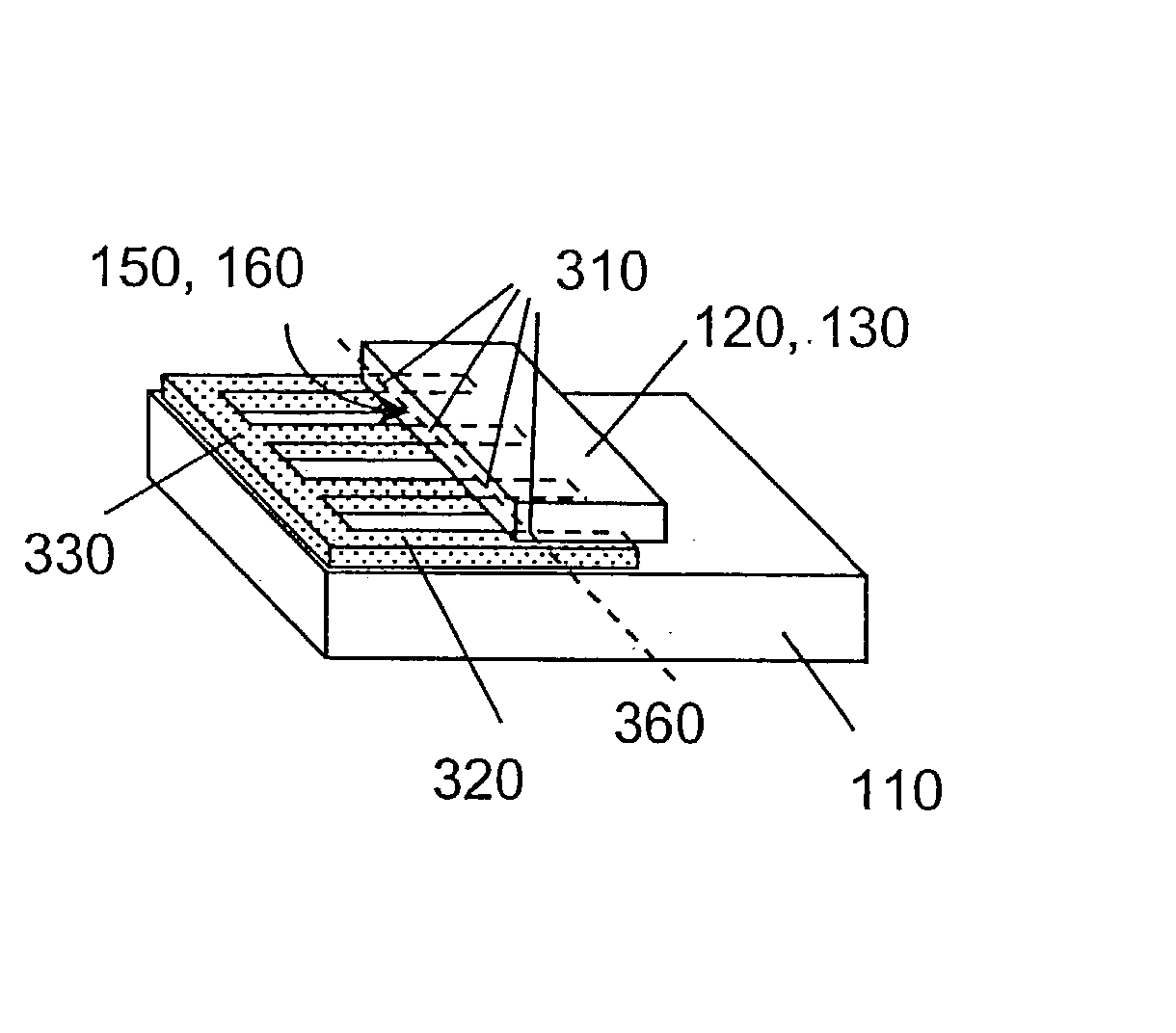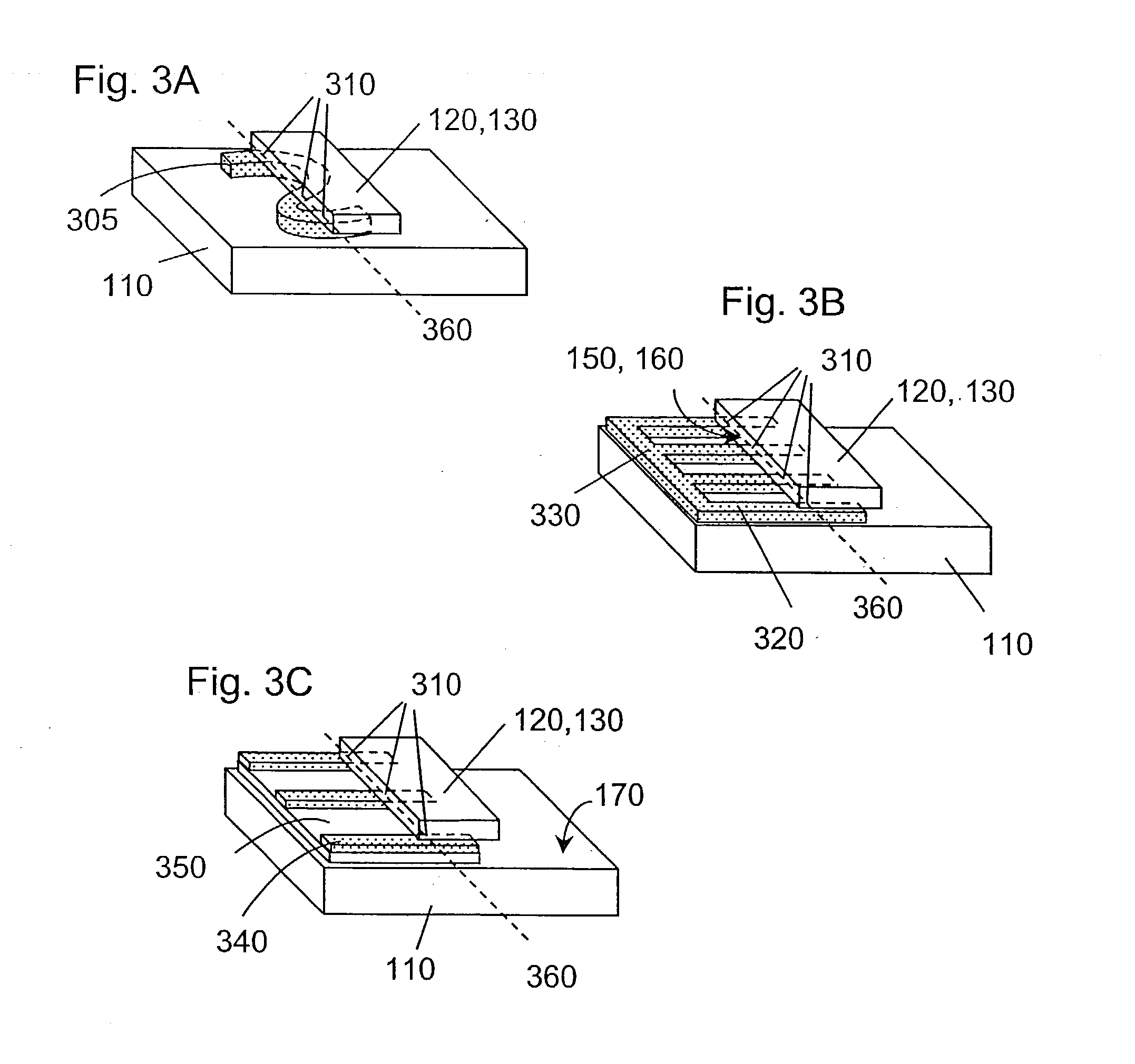Packaging and alignment methods for optical components, and optical apparatus employing same
a technology of optical components and alignment methods, applied in the field of packaging and alignment methods for optical components, can solve the problems of low cumbersome and slow fully active fiber alignment process embodied in the standard procedure, and inability to meet the needs of high volume, high yield and low cost manufacturing,
- Summary
- Abstract
- Description
- Claims
- Application Information
AI Technical Summary
Benefits of technology
Problems solved by technology
Method used
Image
Examples
Embodiment Construction
and Method
[0072] Referring to FIGS. 10 and 11, there is shown a preferred array device 1000 comprising a single crystal silicon submount 1010, a diode laser array chip 1020 herein called a laser bar, and a lithium niobate waveguide array chip 1030 herein called a LN WG chip, constructed according to the method of this invention. The laser bar 1020 in this example is 10 mm wide as measured in the direction indicated by the arrows labeled C in FIG. 10, 0.5 mm long, and 0.1 mm thick, and contains around 100 individual diode lasers also called stripes or emitters. A standoff structure 1040, comprising a series of parallel, longitudinally oriented rib standoffs, is shown on the surface of the submount 1010. The upper surfaces of the standoffs define a reference surface 1150. The standoffs are fabricated by photolithography and etching, using one of the standard processes employed in silicon wafer fabrication. The height 1142 of the standoff structures is around 0.005 mm, and their width ...
PUM
 Login to View More
Login to View More Abstract
Description
Claims
Application Information
 Login to View More
Login to View More - R&D
- Intellectual Property
- Life Sciences
- Materials
- Tech Scout
- Unparalleled Data Quality
- Higher Quality Content
- 60% Fewer Hallucinations
Browse by: Latest US Patents, China's latest patents, Technical Efficacy Thesaurus, Application Domain, Technology Topic, Popular Technical Reports.
© 2025 PatSnap. All rights reserved.Legal|Privacy policy|Modern Slavery Act Transparency Statement|Sitemap|About US| Contact US: help@patsnap.com



